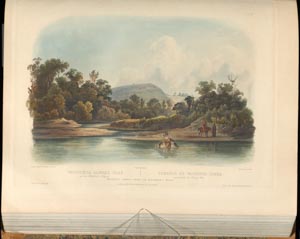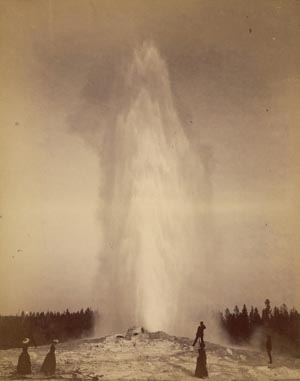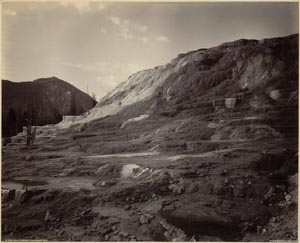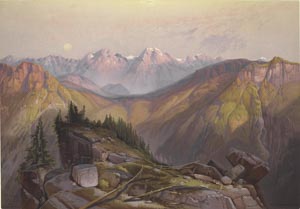North American West
For nineteenth-century Europeans and Americans of European ancestry, “The West” was a region wild and fantastic, destined to be colonized and linked to the glorious future of the young United States. Scientists, artists and photographers were among the first to journey there, and their publications revealed American topographies that most of their national and international audiences had never seen before. The German aristocrat and naturalist Prince Maximilien of Wied-Neuwied, accompanied by the Swiss artist Karl Bodmer, travelled up the Missouri River. They focused on documenting customs, artifacts, and individuals of Indigenous groups they encountered: Mandan, Hidatsa, Blackfoot, and many others. The pair’s Travels in the Interior of North America, first published in German from 1839–41, is still viewed as a valuable record of life on the Plains before the convulsions and devastation that followed, caused by aggressive American westward expansion.
While Maximilien and Bodmer’s enterprise was self-directed, other excursionists worked for industrialists, or were linked to official, colonialist expeditions like the land surveys led by Ferdinand Hayden of the United States Geological Survey. In the photographs of Frank Jay Haynes, who created impressive prints from enormous glass-plate negatives (called “mammoth plates”), the land appears magnificent and seductive, as it does in the paintings and chromolithographs of Thomas Moran. Moran was attached to the Hayden Geological Survey of 1871 in the Yellowstone region, alongside the photographer William Henry Jackson. Their work, disseminated through the magazine Scribner’s Monthly, helped to foment the national interest and pride in the area that led to the formation of Yellowstone National Park.



